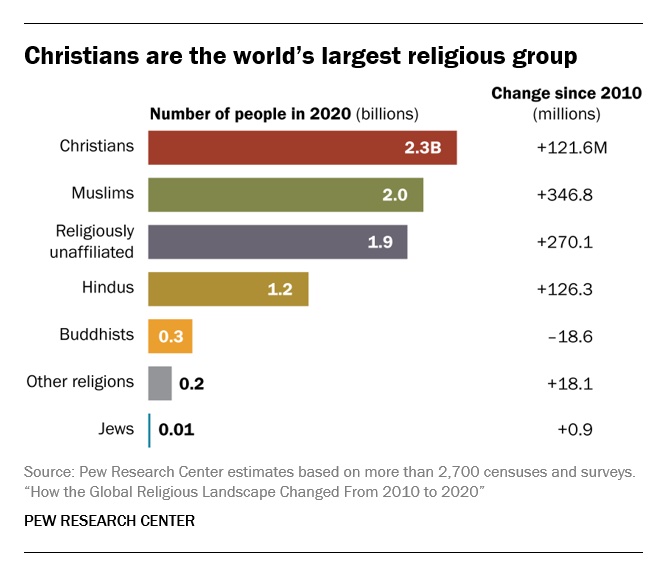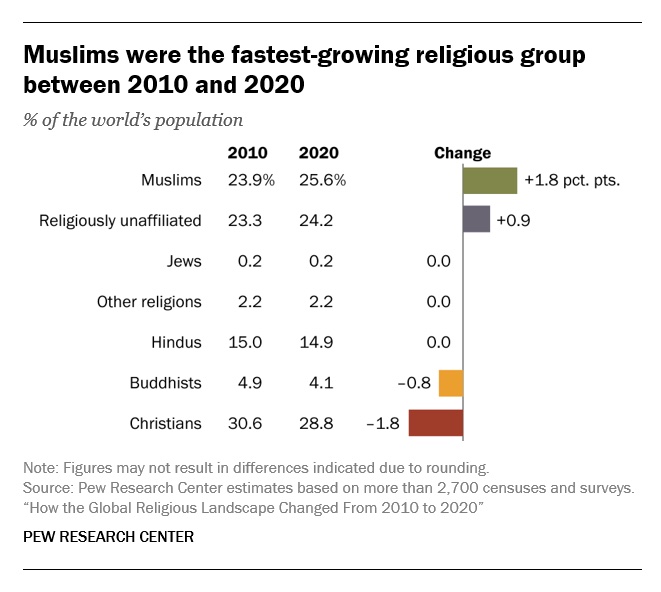Uncategorized
Embracing their place on ‘the fringes,’ queer artists reimagine Jewish ritual garments for all bodies
(JTA) — Binya Kóatz remembers the first time she saw a woman wearing tzitzit. While attending Friday night services at a Jewish Renewal synagogue in Berkeley, she noticed the long ritual fringes worn by some observant Jews — historically men — dangling below a friend’s short shorts.
“That was the first time I really realized how feminine just having tassels dangling off you can look and be,” recalled Kóatz, an artist and activist based in the Bay Area. “That is both deeply reverent and irreverent all at once, and there’s a deep holiness of what’s happening here.”
Since that moment about seven years ago, Kóatz has been inspired to wear tzitzit every day. But she has been less inspired by the offerings available in online and brick-and-mortar Judaica shops, where the fringes are typically attached to shapeless white tunics meant to be worn under men’s clothing.
So in 2022, when she was asked to test new prototypes for the Tzitzit Project, an art initiative to create tzitzit and their associated garment for a variety of bodies, genders and religious denominations, Kóatz jumped at the chance. The project’s first products went on sale last month.
“This is a beautiful example of queers making stuff for ourselves,” Kóatz said. “I think it’s amazing that queers are making halachically sound garments that are also ones that we want to wear and that align with our culture and style and vibrancy.”
Jewish law, or halacha, requires that people who wear four-cornered garments — say, a tunic worn by an ancient shepherd — must attach fringes to each corner. The commandment is biblical: “Speak to the Israelite people and instruct them to make for themselves fringes on the corners of their garments throughout the ages” (Numbers 15:37-41) When garments that lack corners came into fashion, many Jews responded by using tzitzit only when wearing a tallit, or prayer shawl, which has four corners.
But more observant Jews adopted the practice of wearing an additional four-cornered garment for the sole purpose of fulfilling the commandment to tie fringes to one’s clothes. Called a tallit katan, or small prayer shawl, the garment is designed to be worn under one’s clothes and can be purchased at Judaica stores or online for less than $15. The fringes represent the 613 commandments of the Torah, and it is customary to hold them and kiss them at certain points while reciting the Shema prayer.
“They just remind me of my obligations, my mitzvot, and my inherent holiness,” Kóatz said. “That’s the point, you see your tzitzit and you remember everything that it means — all the obligations and beauty of being a Jew in this world.”
The California-based artists behind the Tzitzit Project had a hunch that the ritual garment could appeal to a more diverse set of observant Jews than the Orthodox men to whom the mass-produced options are marketed. Julie Weitz and Jill Spector had previously collaborated on the costumes for Weitz’s 2019 “My Golem” performance art project that uses the mythical Jewish creature to explore contemporary issues. In one installment of the project focused on nature, “Prayer for Burnt Forests,” Weitz’s character ties a tallit katan around a fallen tree and wraps the tzitzit around its branches.
“I was so moved by how that garment transformed my performance,” Weitz said, adding that she wanted to find more ways to incorporate the garment into her life.
The Tzitzit Project joins other initiatives meant to explore and expand the use of tzitzit. A 2020 podcast called Fringes featured interviews with a dozen trans and gender non-conforming Jews about their experiences with Jewish ritual garments. (Kóatz was a guest.) Meanwhile, an online store, Netzitzot, has since 2014 sold tzitzit designed for women’s bodies, made from modified H&M undershirts.
The Tzitzit Project goes further and sells complete garments that take into account the feedback of testers including Kóatz — in three colors and two lengths, full and cropped, as well as other customization options related to a wearer’s style and religious practices. (The garments cost $100, but a sliding scale for people with financial constraints can bring the price as far down as $36.)
Spector and Weitz found that the trial users were especially excited by the idea that the tzitzit could be available in bright colors, and loved how soft the fabric felt on their bodies, compared to how itchy and ill-fitting they found traditional ones to be. They also liked that each garment could be worn under other clothing or as a more daring top on its own.
To Weitz, those attributes are essential to her goal of “queering” tzitzit.
“Queering something also has to do with an embrace of how you wear things and how you move your body in space and being proud of that and not carrying any shame around that,” she said. “And I think that that stylization is really distinct. All those gender-conventional tzitzit for men — they’re not about style, they’re not about reimagining how you can move your body.”
Artist Julie Weitz ties the knots of the tzitzit, fringes attached to the corners of a prayer shawl or the everyday garment known as a “tallit katan.” (Courtesy of Tzitzit Project)
For Chelsea Mandell, a rabbinical student at the Academy of Jewish Religion in Los Angeles who is nonbinary, the Tzitzit Project is creating Jewish ritual objects of great power.
“It deepens the meaning and it just feels more radically spiritual to me, when it’s handmade by somebody I’ve met, aimed for somebody like me,” said Mandell, who was a product tester.
Whether the garments meet the requirements of Jewish law is a separate issue. Traditional interpretations of the law hold that the string must have been made specifically for tzitzit, for example — but it’s not clear on the project’s website whether the string it uses was sourced that way. (The project’s Instagram page indicates that the wool is spun by a Jewish fiber artist who is also the brother of the alt-rocker Beck.)
“It is not obvious from their website which options are halachically valid and which options are not,” said Avigayil Halpern, a rabbinical student who began wearing tzitzit and tefillin at her Modern Orthodox high school in 2013 when she was 16 and now is seen as a leader in the movement to widen their use.
“And I think it’s important that queer people in particular have as much access to knowledge about Torah and mitzvot as they’re embracing mitzvot.”
Weitz explained that there are multiple options for the strings — Tencel, cotton or hand-spun wool — depending on what customers prefer, for their comfort and for their observance preferences.
“It comes down to interpretation,” she said. “For some, tzitzit tied with string not made for the purpose of tying, but with the prayer said, is kosher enough. For others, the wool spun for the purpose of tying is important.”
Despite her concerns about its handling of Jewish law, Halpern said she saw the appeal of the Tzitzit Project, with which she has not been involved.
“For me and for a lot of other queer people, wearing something that is typically associated with Jewish masculinity — it has a gender element,” explained Halpern, a fourth-year student at Hadar, the egalitarian yeshiva in New York.
“If you take it out of the Jewish framework, there is something very femme and glamorous and kind of fun in the ways that dressing up and wearing things that are twirly is just really joyful for a lot of people,” she said.
Rachel Schwartz first became drawn to tzitzit while studying at the Conservative Yeshiva in Jerusalem in 2018. There, young men who were engaging more intensively with Jewish law and tradition than they had in the past began to adopt the garments, and Schwartz found herself wondering why she had embraced egalitarian religious practices in all ways but this one.
“One night, I took one of my tank tops and I cut it up halfway to make the square that it needed. I found some cool bandanas at a store and I sewed on corners,” Schwartz recalled. “And I bought the tzitzit at one of those shops on Ben Yehuda and I just did it and it was awesome.”
Rachel Schwartz stands in front of a piece of graffiti that plays on the commandment to wear tzitzit, written in the Hebrew feminine. (Courtesy of Rachel Schwartz)
Schwartz’s experience encapsulates both the promise and the potential peril of donning tzitzit for people from groups that historically have not worn the fringes. Other women at the Conservative Yeshiva were so interested in her tzitzit that she ran a workshop where she taught them how to make the undergarment. But she drew so many critical comments from men on the streets of Jerusalem that she ultimately gave up wearing tzitzit publicly.
“I couldn’t just keep on walking around like that anymore. I was tired of the comments,” Schwartz said. “I couldn’t handle it anymore.”
Rachel Davidson, a Reconstructionist rabbi working as a chaplain in health care in Ohio, started consistently wearing a tallit katan in her mid-20s. Like Kóatz, she ordered her first one from Netzitzot.
“I would love to see a world where tallitot katanot that are shaped for non cis-male bodies are freely available and are affordable,” Davidson said. “I just think it’s such a beautiful mitzvah. I would love it if more people engaged with it.”
Kóatz believes that’s not only possible but natural. As a trans woman, she said she is drawn to tzitzit in part because of the way they bring Jewish tradition into contact with contemporary ideas about gender.
“Queers are always called ‘fringe,’” she said. “And here you have a garment which is literally like ‘kiss the fringes.’ The fringes are holy.”
—
The post Embracing their place on ‘the fringes,’ queer artists reimagine Jewish ritual garments for all bodies appeared first on Jewish Telegraphic Agency.
Uncategorized
How the Global Religious Landscape Changed from 2010 to 2020

Muslims grew fastest; Christians lagged behind global population increase
• Christians are the world’s largest religious group, at 28.8% of the global population. They are a majority everywhere except the Asia-Pacific and Middle East-North Africa regions. Sub-Saharan Africa has surpassed Europe in having the largest number of Christians. But Christians are shrinking as a share of the global population, as millions of Christians “switch” out of religion to become religiously unaffiliated.

• Muslims are the world’s second-largest religious group (25.6% of the world’s population) and the fastest-growing major religion, largely due to Muslims’ relatively young age structure and high fertility rate. They make up the vast majority of the population in the Middle East-North Africa region. In all other regions, Muslims are a religious minority, including in the Asia-Pacific region (which is home to the greatest number of Muslims).

• The religiously unaffiliated population is the world’s third-largest religious category (24.2% of the global population), after Christians and Muslims. Between 2010 and 2020, religiously unaffiliated people grew more than any group except Muslims, despite their demographic disadvantages of an older age structure and relatively low fertility. The unaffiliated made up a majority of the population in 10 countries and territories in 2020, up from seven a decade earlier.
• Hindus are the fourth-largest religious category (14.9% of the world’s population), after Christians, Muslims and religiously unaffiliated people. Most (99%) live in the Asia-Pacific region; 95% of all Hindus live in India alone. Between 2010 and 2020, Hindus remained a stable share of the world’s population because their fertility resembles the global average, and surveys indicate that switching out of or into Hinduism is rare.
• Buddhists (4.1% of the world’s population) are the only group in this report whose number declined worldwide between 2010 and 2020. This was due both to religious disaffiliation among Buddhists in East Asia and to a relatively low birth rate among Buddhists, who tend to live in countries with older populations. Most of the world’s Buddhists (98%) reside in the Asia-Pacific region, the birthplace of Buddhism.
• Jews, the smallest religious group analyzed separately in this report (0.2% of the world’s population), lagged behind global population growth between 2010 and 2020 – despite having fertility rates on par with the global average – due to their older age structure. Most Jews live either in North America (primarily in the United States) or in the Middle East-North Africa region (almost exclusively in Israel).
These are among the key findings of a Pew Research Center analysis of more than 2,700 censuses and surveys, including census data releases that were delayed due to the coronavirus pandemic. This report is part of the Pew-Templeton Global Religious Futures project, which analyzes global religious change and its impact on societies around the world. Funding for the Global Religious Futures project comes from The Pew Charitable Trusts and the John Templeton Foundation.
Uncategorized
Antisemitism in some unlikely places in America

By HENRY SREBRNIK Antisemitism flourishes in a place where few might expect to confront it – medical schools and among doctors. It affects Jews, I think, more emotionally than Judeophobia in other fields.
Medicine has long been a Jewish profession with a history going back centuries. We all know the jokes about “my son – now also my daughter – the doctor.” Physicians take the Hippocratic Oath to heal the sick, regardless of their ethnicity or religion. When we are ill doctors often become the people who save us from debilitating illness and even death. So this is all the more shocking.
Yes, in earlier periods there were medical schools with quotas and hospitals who refused or limited the number of Jews they allowed to be affiliated with them. It’s why we built Jewish hospitals and practices. And of course, we all shudder at the history of Nazi doctors and euthanasia in Germany and in the concentration camps of Europe. But all this – so we thought – was a thing of a dark past. Yet now it has made a comeback, along with many other horrors we assume might never reappear.
Since the Hamas attack on Israel on October 7, 2023, there has been a resurgence of antisemitism, also noticeable in the world of healthcare. This is not just a Canadian issue. Two articles on the Jewish website Tablet, published Nov. 21, 2023, and May 18, 2025, spoke to this problem in American medicine as well, referencing a study by Ian Kingsbury and Jay P. Greene of Do No Harm, a health care advocacy group, based on data amassed by the organization Stop Antisemitism. They identified a wave of open Jew-hatred by medical professionals, medical schools, and professional associations, often driven by foreign-trained doctors importing the Jew-hatred of their native countries, suggesting “that a field entrusted with healing is becoming a licensed purveyor of hatred.”
Activists from Doctors Against Genocide, American Palestinian Women’s Association, and CODEPINK held a demonstration calling for an immediate cease-fire in Gaza at the Hart Senate Office Building in Washington, D.C., Nov. 16, 2023, almost as soon as the war began. A doctor in Tampa took to social media to post a Palestinian flag with the caption “about time!!!” The medical director of a cancer centre in Dearborn, Michigan, posted on social media: “What a beautiful morning. What a beautiful day.” Even in New York, a physician commented on Instagram that “Zionist settlers” got “a taste of their own medicine.” A Boston-based dentist was filmed ripping down posters of Israeli victims and a professor at the University of Pennsylvania Perelman School of Medicine did the same. Almost three-quarters of American medical associations felt the need to speak out on the war in Ukraine but almost three-quarters had nothing to say about the war in Israel.
Antisemitism in academic medical centres is fostering noxious environments which deprive Jewish healthcare professionals of their civil right to work in spaces free from discrimination and hate, according to a study by the Data & Analytics Department of StandWithUs, an international, non-partisan education organization that supports Israel and fights antisemitism.
“Academia today is increasingly cultivating an environment which is hostile to Jews, as well as members of other religious and ethnic groups,” StandWithUs director of data and analytics, and study co-author, Alexandra Fishman, said on May 5 in a press release. “Academic institutions should be upholding the integrity of scholarship, prioritizing civil discourse, rather than allowing bias or personal agendas to guide academic culture.”
The study, “Antisemitism in American Healthcare: The Role of Workplace Environment,” included survey data showing that 62.8 per cent of Jewish healthcare professionals employed by campus-based medical centres reported experiencing antisemitism, a far higher rate than those working in private practice and community hospitals. Fueling the rise in hate, it added, were repeated failures of DEI (diversity, equity, and inclusion) initiatives to educate workers about antisemitism, increasing, the report said, the likelihood of antisemitic activity.
“When administrators and colleagues understand what antisemitism looks like, it clearly correlates with less antisemitism in the workplace,” co-author and Yeshiva University professor Dr. Charles Auerbach reported. “Recognition is a powerful tool — institutions that foster awareness create safer, more inclusive environments for everyone.”
Last December, the Data & Analytics Department also published a study which found that nearly 40 per cent of Jewish American health-care professionals have encountered antisemitism in the workplace, either as witnesses or victims. The study included a survey of 645 Jewish health workers, a substantial number of whom said they were subject to “social and professional isolation.” The problem left more than one quarter of the survey cohort, 26.4 per cent, “feeling unsafe or threatened.”
The official journal of the Alliance for Academic Internal Medicine concurs. According to “The Moral Imperative of Countering Antisemitism in US Medicine – A Way Forward,” by Hedy S. Wald and Steven Roth, published in the October 2024 issue of the American Journal of Medicine, increased antisemitism in the United States has created a hostile learning and practice environment in medical settings. This includes instances of antisemitic behaviour and the use of antisemitic symbols at medical school commencements.
Examples of its impact upon medicine include medical students’ social media postings claiming that Jews wield disproportionate power, antisemitic slogans at the University of California, Los Angeles (UCLA) David Geffen School of Medicine, antisemitic graffiti at the University of California, San Francisco (UCSF) Cancer Centre, Jewish medical students’ exposure to demonization of Israel diatribes and rationalizing terrorism; and faculty, including a professor of medicine at UCSF, posting antisemitic tropes and derogatory comments about Jewish health care professionals. Jewish medical students’ fears of retribution, should they speak out, have been reported. “Our recent unpublished survey of Jewish physicians and trainees demonstrated a twofold increase from 40% to 88% for those who experienced antisemitism prior to vs after October 7,” they stated.
In some schools, Jewish faculty are speaking out. In February, the Jewish Faculty Resilience Group at UCLA accused the institution in an open letter of “ignoring” antisemitism at the School of Medicine, charging that its indifference to the matter “continues to encourage more antisemitism.” It added that discrimination at the medical school has caused demonstrable harm to Jewish students and faculty. Student clubs, it said, are denied recognition for arbitrary reasons; Jewish faculty whose ethnic backgrounds were previously unknown are purged from the payrolls upon being identified as Jews; and anyone who refuses to participate in anti-Zionist events is “intimidated” and pressured.
Given these findings, many American physicians are worried not only as Jewish doctors and professionals, but for Jewish patients who are more than ever concerned with whom they’re meeting. Can we really conceive of a future where you’re not sure if “the doctor will hate you now?”
Henry Srebrnik is a professor of political science at the University of Prince Edward Island.
Uncategorized
The 2025 Toronto Walk (and talk ) for Israel

By GERRY POSNER There are walks and then there are walks. The Toronto UJA Walk for Israel on May 25, 2025 was one of a kind, at least as far as Canada and Jews are concerned. The number of people present was estimated to be 56,000 people or 112,000 total shoes. (How they get to that number is bewildering to me, since there is no one counting). This was 6,000 more than last year. Whether it is true or not, take it from me, it was packed. The synagogues in Canada should be so fortunate to get those numbers in total on High Holidays. The picture here gives you a sense of the size of the crowd.

This was my first walk in Toronto for Israel and I was with my granddaughter, Samantha Pyzer (not to forget her two friends whom she managed to meet at the site, no small feat, even with iPhones as aids). The official proceedings began at 9:00 a.m. and the walk at 10:00 a.m. There was entertainment to begin with, also along the way, and at the finish as well. The finish line this year was the Prosserman Centre or the JCC as it often called. The walk itself was perhaps 4 kilometres – not very long, but the walking was slow, especially at the beginning. There were lots of strollers, even baby carriages, though I did not see any wheelchairs. All ages participated on this walk. I figured, based on what I could see on the faces of people all around me that, although I was not the oldest one on the walk, I bet I made the top 100 – more likely the top 20.
What was a highlight for me was the number of Winnipeggers I met, both past and present. Connecting with them seemed to be much like a fluke. No doubt, I missed la lot of them, but I saw, in no particular order (I could not recall the order if my life depended on it): Alta Sigesmund, (who was, a long time ago, my daughter Amira’s teacher), Marni Samphir, Karla Berbrayer and her husband Dr. Allan Kraut and family. Then, when Samantha and I made it to the end and sat down to eat, I struck up a conversation with a woman unknown to me and as we chatted, she confirmed her former Winnipeg status as a sister-in- law to David Devere, as in Betty Shwemer, the sister of Cecile Devere. I also chanced upon Terri Cherniack, only because I paused for a moment and she spotted me. As we closed in near the finish, I met ( hey were on their way back), Earl and Suzanne Golden and son Matthew, as well as Daniel Glazerman. That stop caused me to lose my granddaughter and her pals. Try finding them amid the noise and size of the crowd – but I pulled it off.

As I was in line to get food, I started chatting with a guy in the vicinity of my age. I dropped the Winnipeg link and the floodgates opened with “ Did I know Jack and Joanie Rusen?” So that was an interesting few minutes. And I was not too terribly surprised to come across some of my Pickleball family. All of these meetings, along with spotting some of my sister’s family and other cousins, were carried on with the sound of the shofar as we moved along the way. In short, this was a happening. Merchants selling a variety of products, many of them Israeli based, were in evidence and, of course, the day could not have ended without the laying of tefillin, aided by Chabad, who have perfected the procedure to take less than a minute. See the photo. Chabad had a willing audience.
Aside from the joy of sharing this experience with my granddaughter, the very presence of all these Jews gathered together for a common reason made this day very special to me. However, there was a downside to the day. The downside was that, as we began to walk back to our car there was no other way I could figure out how to return when the rains came and came. While we walked faster, we were impeded by pouring rain and puddles. But Samantha wanted to persevere, as did I. We made it, but were drenched. My runners are still drying out as I write this two days later.
What with being surrounded by 56,000 people, the noise, the slow walking, and the rain, I can still say the day was a real highlight for me – one of the better moments since our arrival in Toronto in 2012. As well as the photos we took along the way, I have the reminder of the day, courtesy of the UJA, as evidenced from the photo. It was not just the walk, but the talk that accompanied the walk that made it so worthwhile for me. I would do it again, minus the rain.
